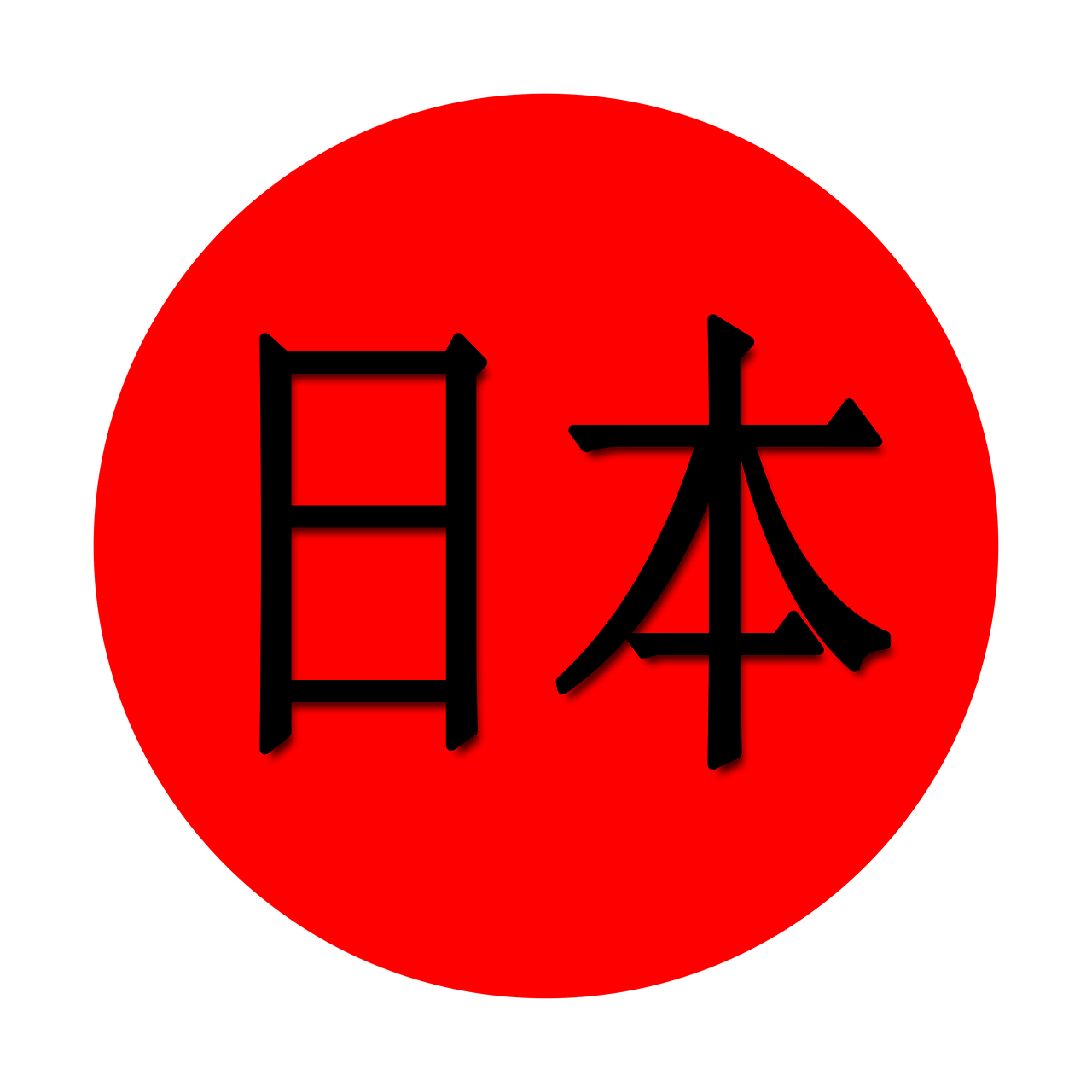What Does Blue Mean in Japanese Culture?
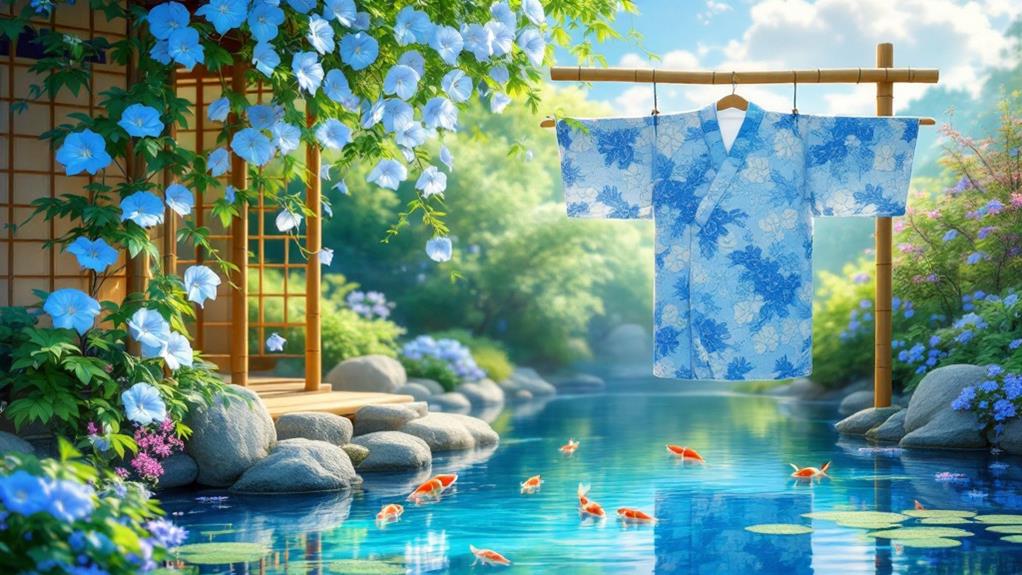
In Japanese culture, blue represents purity, calmness, and a deep connection to nature. It's not just a color; it's woven into the fabric of Japanese life through the ancient art of indigo dyeing, known as aizome. This technique symbolizes purity and protection, linking everyday life to spiritual beliefs that blue wards off evil spirits. In art and traditional attire, blue conveys tranquility and grace, often seen in kimono patterns and traditional paintings. Even in modern design, blue balances tradition with contemporary values. There's more to investigate about how this color integrates into diverse aspects of Japanese culture.
Historical Significance of Blue
Throughout Japanese history, the color blue has held a significant place in art, fashion, and symbolism. You'll find that historical blue in Japan isn't just a color; it's a narrative woven into the fabric of the culture. The use of indigo dye, known as aizome, dates back centuries and played a crucial role in establishing blue as a revered hue. This dye not only colored fabrics but also infused them with a deep, rich symbolism. Blue symbolism in Japan often represents purity, calmness, and stability, reflecting the nation's deep connection with nature and its elements. For instance, blue in Japanese gardens might be seen in the tranquil ponds and serene fountains, which improve the garden's peaceful ambiance and symbolize spiritual cleansing.
You can see this symbolism in traditional artworks, where blue often depicts the sky, water, or serene landscapes, embodying tranquility and peace. The historical blue found in ceramics and paintings highlights the importance of balance and harmony, fundamental tenets in Japanese aesthetics. In literature and poetry, blue frequently symbolizes longing and melancholy, emotions closely tied to the human experience. By understanding these historical connotations, you'll appreciate how blue has shaped Japanese identity. The color's influence extends beyond art and literature, permeating societal values and everyday life in Japan, illustrating its enduring significance.
Blue in Traditional Attire
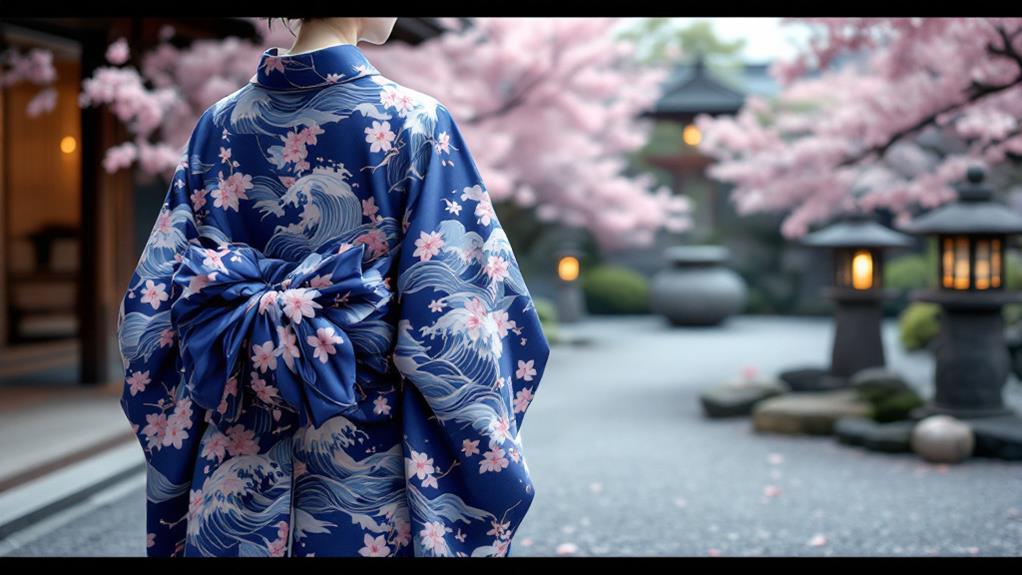
Elegance in traditional Japanese attire often comes alive through the use of the color blue. When you examine the intricacies of a kimono, you'll notice how blue is woven into its very fabric. This color isn't just any hue; it carries a sense of calm and grace, making it a favorite in kimono patterns. Blue hues, from deep indigo to soft sky, decorate the garments, highlighting both nature's beauty and Japan's rich cultural history. In modern Japanese society, evolving gender norms have also influenced personal expression in traditional attire, encouraging diverse interpretations of classic styles. Kimonos crafted with traditional textiles like silk and cotton often showcase blue as a primary color. This choice adds depth and dimension to the garment, allowing the wearer to embody a timeless elegance. The patterns may feature elements such as waves, mountains, or flowers, all of which hold symbolic meanings.
Consider these elements when you think about blue in traditional Japanese attire:
- Seasonal Themes: Blue waves might represent summer's invigorating breeze.
- Nature-inspired Motifs: Blue flowers symbolize purity and tranquility.
- Geometric Designs: Blue stripes or checks add a modern twist to classic styles.
- Cultural Symbols: Blue dragons or phoenixes convey strength and resilience.
Through these patterns and textiles, blue becomes a bridge between tradition and personal expression.
Indigo Dyeing Techniques
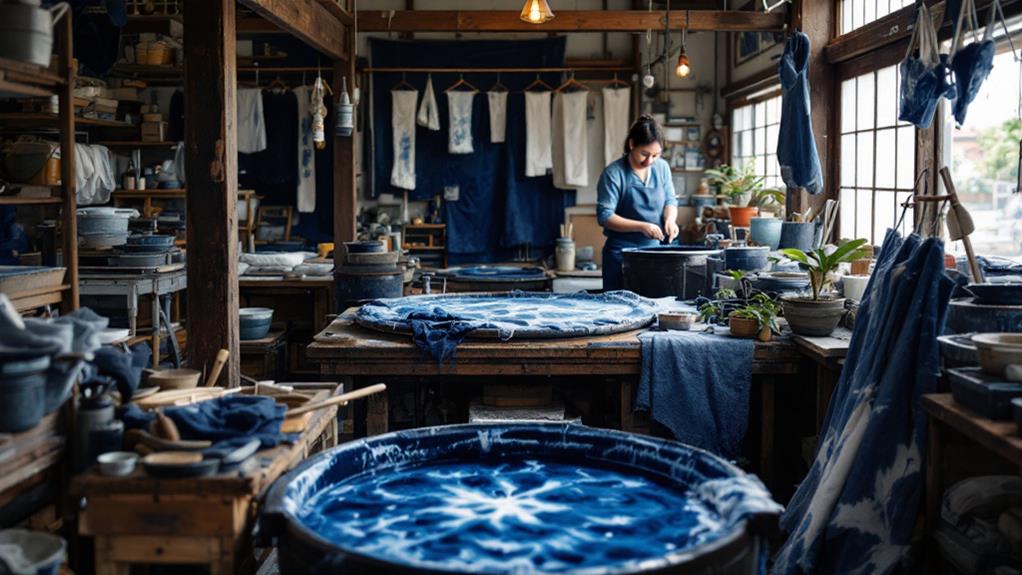
Indigo dyeing in Japan, known as "aizome," is an ancient art form that has captivated artisans and admirers alike for centuries. When you investigate this craft, you'll find that it revolves around using natural indigo, a plant-derived dye, to create stunning indigo patterns on textiles. These patterns aren't just beautiful; they carry deep color symbolism, representing purity, protection, and even status within Japanese culture.
To truly appreciate aizome, you need to understand its dyeing methods. Artisans masterfully extract dye from indigo plants, a process that reflects Japan's commitment to sustainable practices. They use time-honored techniques, guaranteeing that the cultural heritage of this craft is preserved. You'll uncover that these traditional crafts involve careful fermentation of the indigo leaves to produce a lively, long-lasting dye.
The artisan techniques used in aizome allow for the creation of intricate designs that have become iconic in Japanese textile traditions. Regardless of whether you're admiring a kimono or a wall tapestry, you're witnessing the skillful blend of art and nature. The dedication to preserving these methods guarantees that indigo dyeing remains a cherished part of Japan's rich cultural landscape.
Spiritual Symbolism of Blue
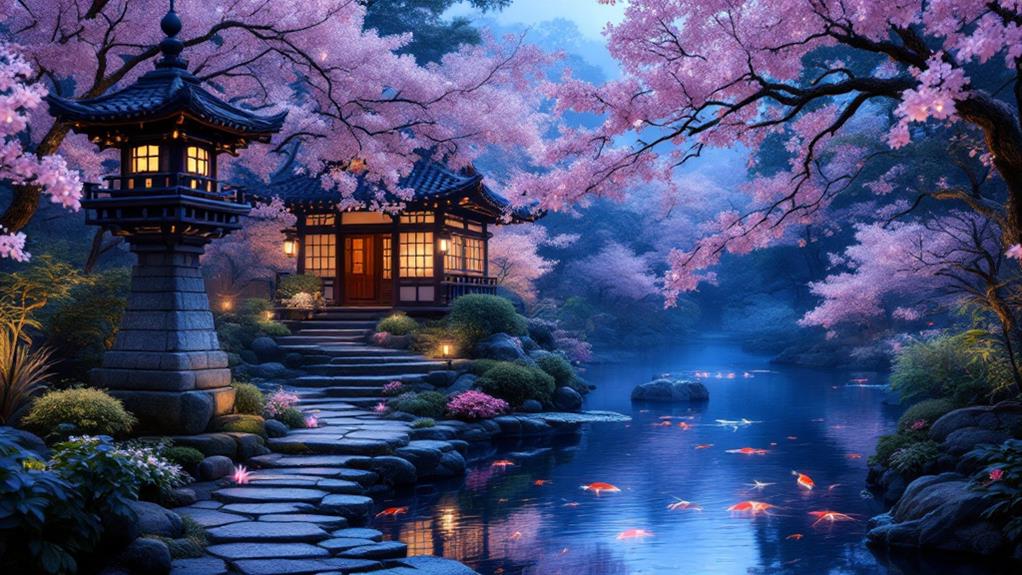
Although blue is often associated with tranquility and calmness in many cultures, in Japan, its spiritual symbolism runs much deeper. Blue is intertwined with the concept of purity, protection, and even the divine. When you investigate blue symbolism in Japanese spirituality, you'll find it's not just about the soothing emotions it evokes, but also the profound meanings it carries.
Blue is often linked to the spiritual dimension, believed to ward off evil spirits and negative energies. It's common to see blue used in talismans and protective charms, offering a sense of safety.
- Purity and Clarity: Blue suggests purity and clarity in thought, akin to a clear sky or pristine waters, encouraging a clean mind and spirit.
- Wisdom and Insight: Embracing blue emotions can lead to wisdom and insight, as blue is associated with the pursuit of knowledge.
- Protection and Safety: People use blue in spiritual rituals to protect themselves from harm and guarantee a safe environment.
- Divine Connection: The color is often used in religious contexts to symbolize a connection with the divine or higher powers.
In your expedition through Japanese culture, you'll uncover how blue's spiritual significance amplifies its emotional impact, creating a rich tapestry of meaning.
Blue in Japanese Art
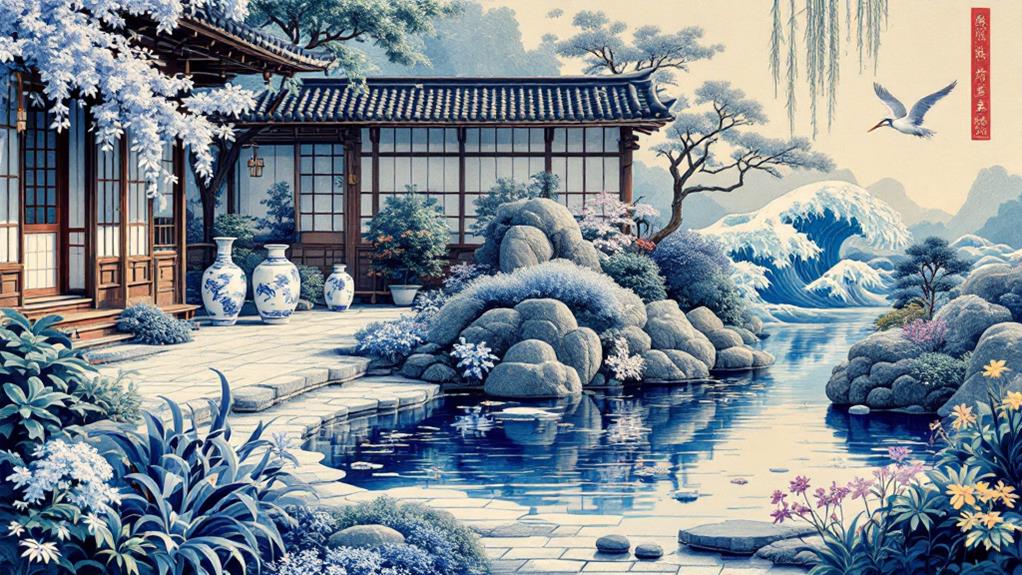
In Japanese art, the color blue isn't just an aesthetic choice but carries the spiritual symbolism discussed earlier into visual expression. You'll find that blue pigments have been used for centuries to convey depth, tranquility, and the boundless energy of nature. Traditional Japanese artworks often incorporate blue motifs, echoing themes of harmony and serenity. Whether it's the delicate waves in ukiyo-e prints or the lively skies in ancient scrolls, blue serves as a bridge between the earthly and the ethereal.
When you investigate Japanese ceramics, you'll notice the prominent use of blue pigments, especially in the iconic blue-and-white porcelain. These pieces often depict scenes of nature or folklore, emphasizing the natural beauty and peacefulness that blue represents. In addition, indigo dye, a staple in Japanese textile art, showcases blue's versatility and its ability to infuse everyday items with cultural significance.
As you examine the rich tapestry of Japanese art, you'll see how blue motifs aren't just decorative but imbued with meaning. They provide a visual dialogue between the past and present, making art not only a feast for the eyes but a reflection of Japan's cultural soul.
Modern Uses of Blue
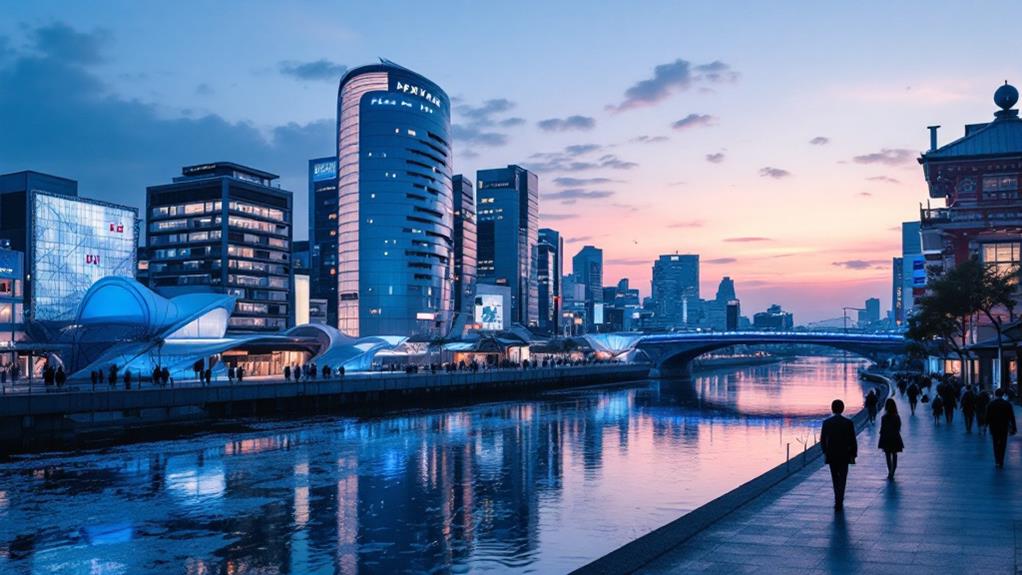
Amidst the lively tapestry of modern Japan, the color blue continues to hold significant cultural and aesthetic value. It's not just a hue but a symbol that permeates diverse aspects of daily life and industry. In the vibrant world of business, blue branding strategies are prominent. Companies often use blue to convey trust, reliability, and innovation, crucial qualities in a competitive market. The color serves as a bridge between tradition and modernity, making it a popular choice for businesses wanting to blend these elements.
In technology, blue is a dominant color, representing the future and advancement. Many leading tech companies incorporate blue in their logos and interfaces, creating a connection between cutting-edge innovation and the serene stability the color suggests. Blue is also a favorite in product design, especially in gadgets and electronics, where it signals sophistication and modernity.
- Corporate Identity: Blue is used extensively in logos and marketing materials.
- Tech Devices: Blue lights and accents are prevalent in modern electronics.
- Fashion: Japanese streetwear often incorporates blue for a cool, contemporary vibe.
- Public Spaces: Urban architecture frequently features blue elements for a futuristic look.
Blue in Japanese Language
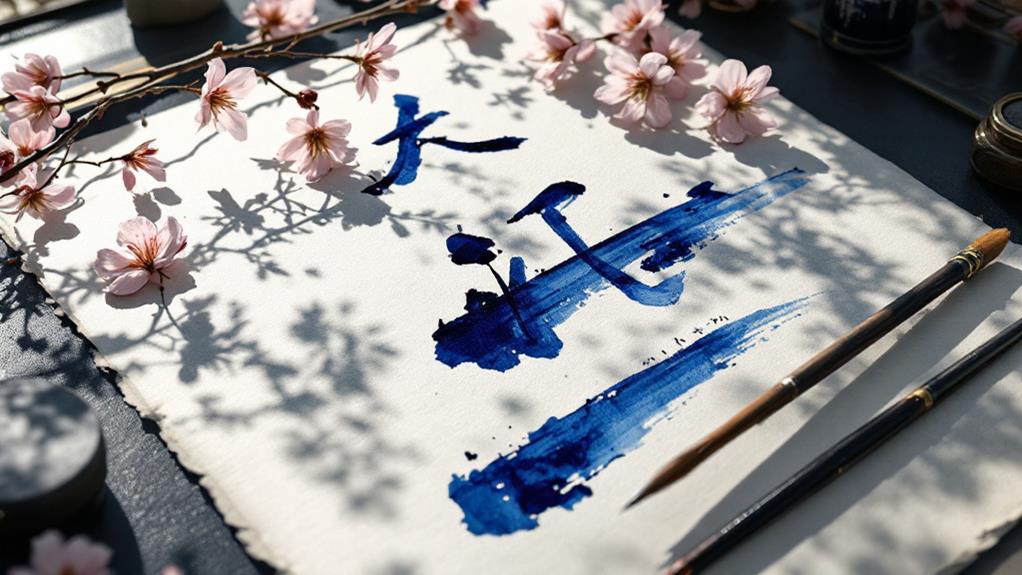
You might be surprised to learn how deeply the color blue is embedded in the Japanese language. It goes beyond describing the sky or the ocean, touching on emotions and expressions that are distinctively Japanese. For instance, the term "ao" historically covered a spectrum that included both blue and green, reflecting how the boundaries between these colors aren't as rigid in Japanese culture. This blurring of lines reveals how blue emotions and blue expressions seep into everyday conversations.
In Japanese, "aoi" can describe inexperience or youth, akin to saying someone is "green" in English. If someone's feeling blue, they might use the phrase "aojiroi kao," meaning a pale or sickly face, indicating unease or illness. In the same way, "aozora" translates to "blue sky," often used metaphorically to signify hope or a fresh start.
Japanese language also uses "blue" in expressions that convey serenity or tranquility. For instance, "aoku sunda me" describes clear, blue eyes, suggesting calmness and depth. So, the color blue in Japanese isn't just a hue; it's a linguistic tapestry woven with cultural nuances that express a range of emotions and states of being.
Blue and Nature in Japan
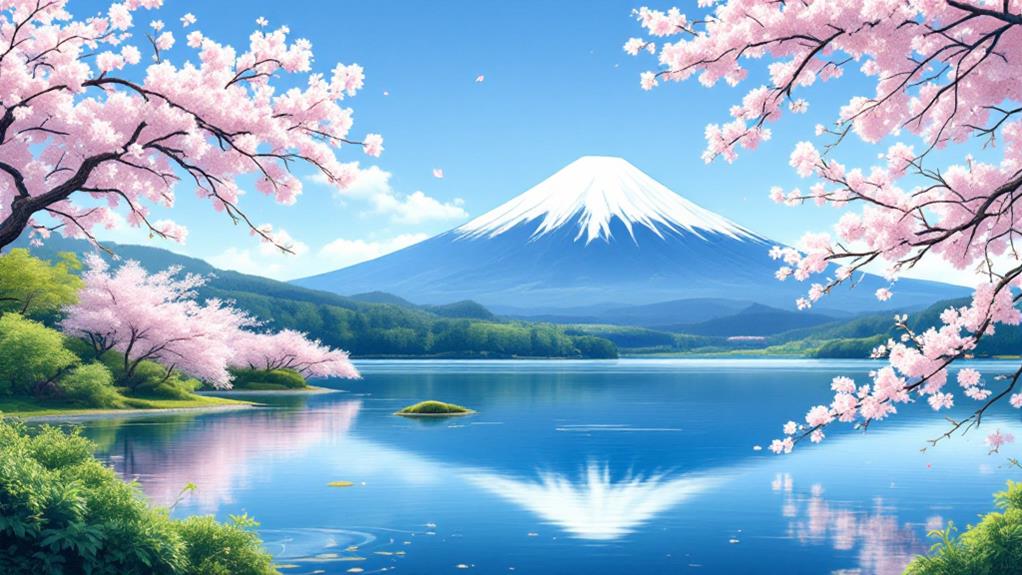
Japan's breathtaking natural landscapes are often draped in shades of blue, from the tranquil waters of its coastal regions to the expansive skies that stretch over its mountains. As you investigate Japan, you'll notice how the color blue seamlessly intertwines with nature. The country's unique blue flora, like the delicate hydrangeas that bloom during the rainy season, add lively splashes of blue to gardens and parks, creating a serene atmosphere. Fields of nemophila, often called "baby blue eyes," transform the Hitachi Seaside Park into a blue wonderland each spring.
The interaction between blue and nature isn't limited to plants. Japan's blue fauna is similarly enchanting. Look for the vivid blue feathers of the kingfisher, a bird that graces rivers and streams with its striking color and swift movements. The azure-winged magpie, another avian wonder, can be spotted in woodlands, its blue wings contrasting beautifully with the greenery.
- Hydrangeas: Flourishing during the rainy season.
- Nemophila: Blankets fields in spring.
- Kingfisher: Known for its lively blue feathers.
- Azure-winged magpie: A striking presence in forests.
These elements highlight how nature in Japan incorporates the color blue, creating breathtaking scenes.
Cultural Festivals and Blue

Many of Japan's lively cultural festivals prominently feature the color blue, imbuing celebrations with a sense of tranquility and elegance. When you attend a Japanese festival, you'll likely notice participants wearing intricate blue festival costumes. These garments aren't just for show; they symbolize harmony and peace, connecting the wearer to the festival's cultural roots. The color blue is often chosen for its calming properties, which balance the dynamic energy of the festivities.
Beyond clothing, blue is also prevalent in numerous food traditions during these festivals. You might find yourself savoring blue-themed dishes that are both visually striking and delicious. Blue rice cakes, dyed using natural ingredients like butterfly pea flowers, are a popular treat. They offer an enticing mix of traditional flavors with a modern twist. Other times, you'll find blue-tinted drinks or desserts, adding to the festival's unique culinary experience.
Participating in these festivals offers a chance to see how deeply the color blue is woven into Japan's cultural fabric. Whether through blue festival costumes or creative blue food traditions, this color enriches the celebration, creating a memorable and culturally engaging experience for you.
Blue's Influence on Design
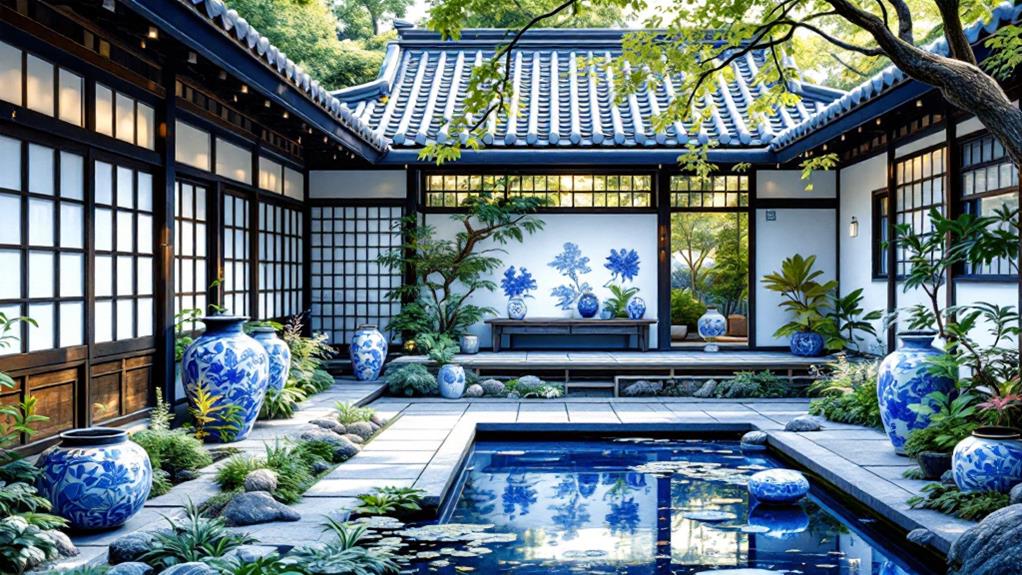
In Japanese design, blue plays an essential role in conveying serenity and sophistication. When you investigate traditional and modern spaces, you'll notice how blue's calming influence is artfully integrated. Blue design trends in Japan often focus on creating a tranquil environment, which aligns with the principles of minimalism and harmony found in Japanese culture. By understanding blue color psychology, you can see why it's chosen to evoke feelings of peace and balance.
Incorporating blue into your designs can be both impactful and versatile. Consider these aspects:
- Indigo Textiles: Traditional indigo dyeing techniques produce deep, rich blues that add a touch of heritage to any design.
- Ceramics and Pottery: Blue glazes on pottery pieces reflect the beauty of nature and water, making them popular in both decor and functional items.
- Architecture: Blue tiles and glass are often used in modern buildings to create a seamless blend between indoor and outdoor spaces.
- Interior Spaces: Soft blue tones on walls and furnishings can make a room feel more open and serene.


